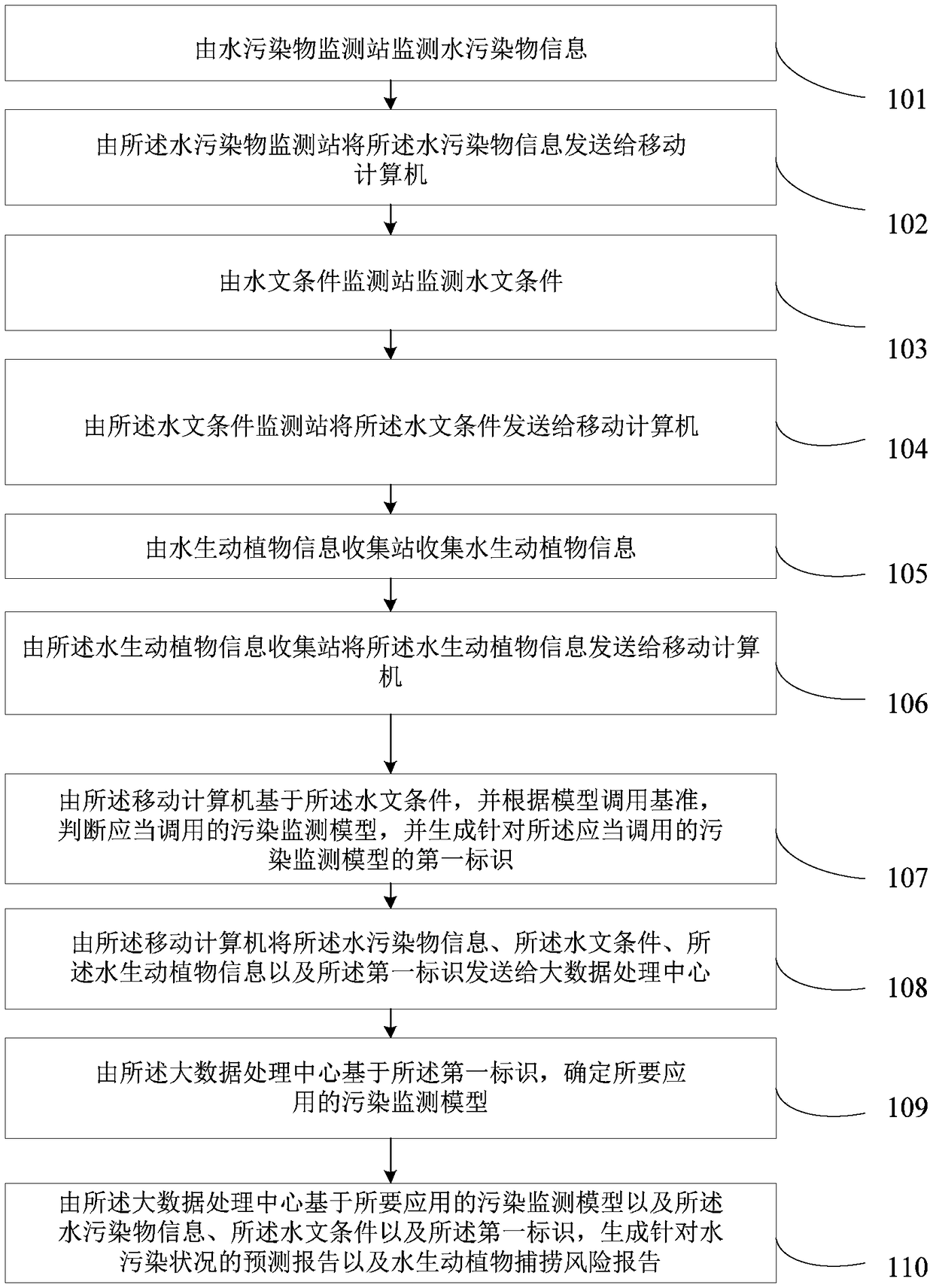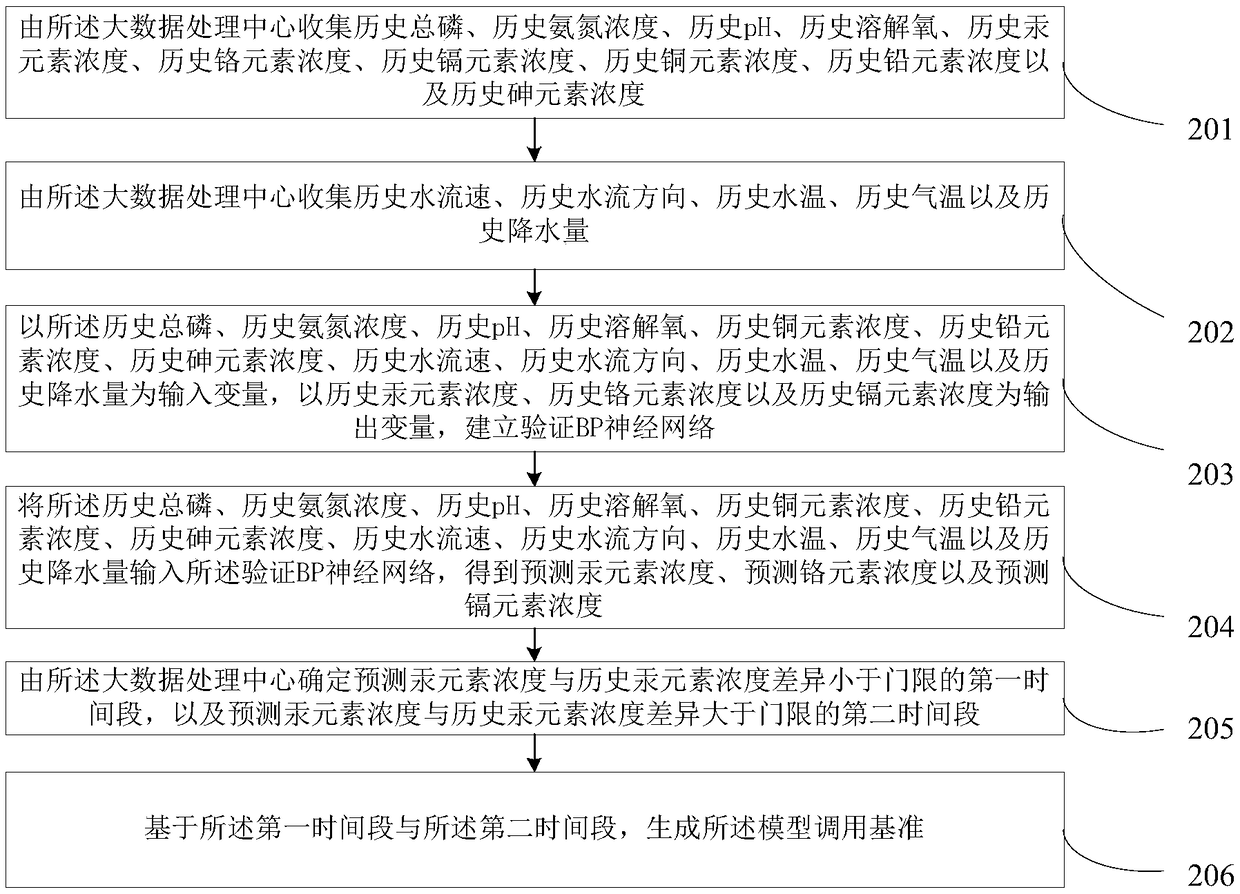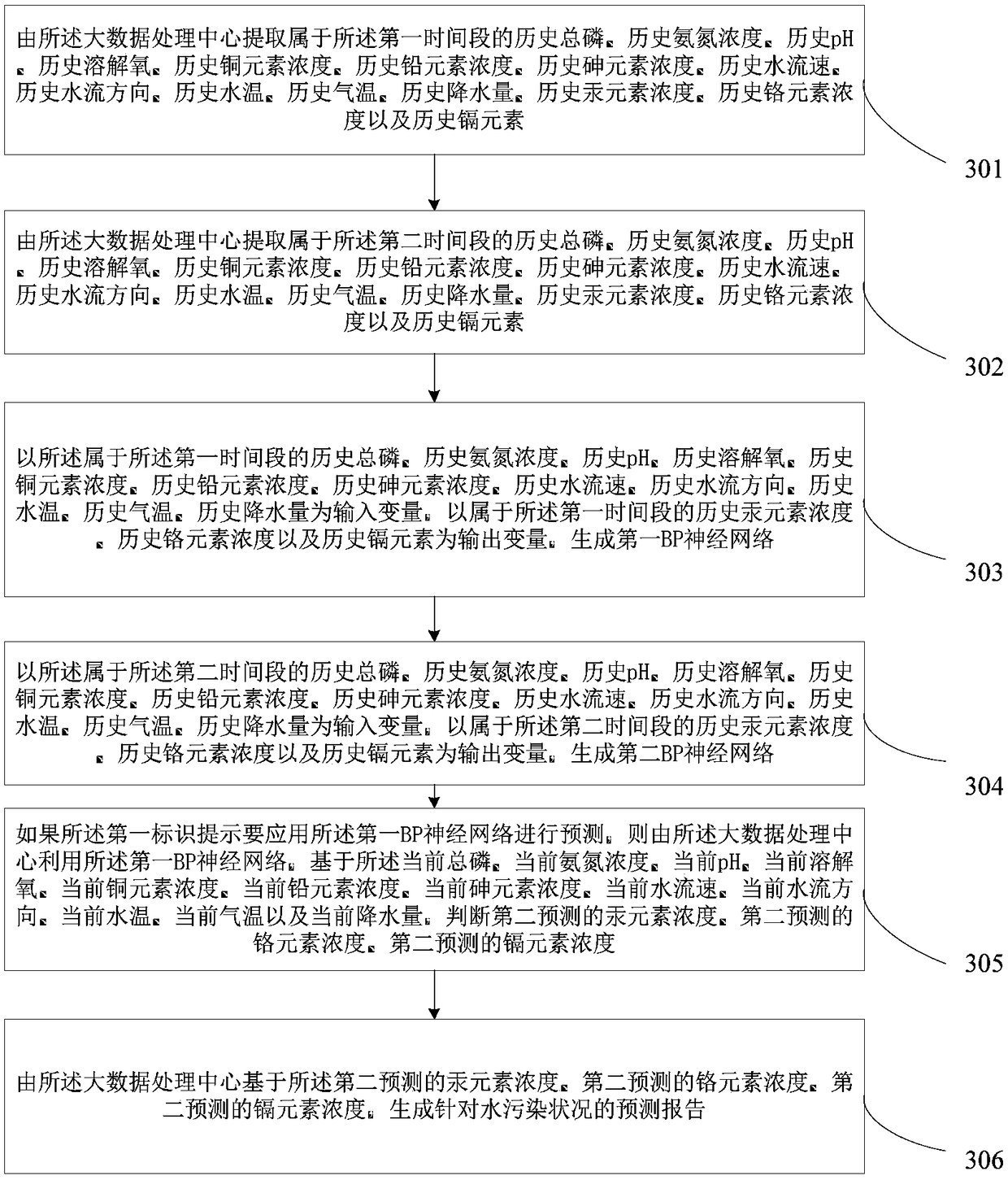Pollution monitoring method and device based on mobile computer and neural network
A mobile computer and pollution monitoring technology, applied in biological neural network models, calculations, neural architectures, etc., can solve problems such as restricting the development of industry and agriculture, uneven temporal and spatial distribution, etc.
- Summary
- Abstract
- Description
- Claims
- Application Information
AI Technical Summary
Problems solved by technology
Method used
Image
Examples
Embodiment 1
[0024] figure 1 is a flowchart of a method according to an embodiment of the present invention. As shown, the method of the present invention includes:
[0025] Step 101: monitor water pollutant information by a water pollutant monitoring station;
[0026] Step 102: the water pollutant monitoring station sends the water pollutant information to the mobile computer;
[0027] Step 103: monitoring the hydrological conditions by the hydrological condition monitoring station;
[0028] Step 104: sending the hydrological condition to the mobile computer by the hydrological condition monitoring station;
[0029] Step 105: collect aquatic animal and plant information by the aquatic animal and plant information collection station;
[0030] Step 106: the aquatic animal and plant information is sent to the mobile computer by the aquatic animal and plant information collection station;
[0031] Step 107: The mobile computer judges the pollution monitoring model that should be called b...
Embodiment 2
[0036] Among them, the water pollutant information includes: current total phosphorus, current ammonia nitrogen concentration, current pH, current dissolved oxygen, current mercury element concentration, current chromium element concentration, current cadmium element concentration, current copper element concentration, current lead element concentration and current arsenic concentration. element concentration; and wherein, the hydrological conditions include: current water flow rate, current water flow direction, current water temperature, current air temperature, and current precipitation; and wherein, aquatic animal and plant information includes: aquatic animal species, hazardous substance residues in aquatic animals, aquatic Plant species and hazardous substance residues in aquatic plants.
[0037] figure 2 is a flowchart of a method according to another embodiment of the present invention. As shown in the figure, the model call benchmark is generated through the followi...
Embodiment 3
[0045] image 3 is a flowchart of a method according to another embodiment of the present invention. As shown in the figure, based on the pollution monitoring model to be applied, the water pollutant information, hydrological conditions and the first identification, the big data processing center generates a forecast report for the water pollution status, including the following steps:
[0046] Step 301: The big data processing center extracts the historical total phosphorus, historical ammonia nitrogen concentration, historical pH, historical dissolved oxygen, historical copper element concentration, historical lead element concentration, historical arsenic element concentration, historical water flow rate, historical Water flow direction, historical water temperature, historical air temperature, historical precipitation, historical mercury concentration, historical chromium concentration, and historical cadmium element;
[0047] Step 302: The big data processing center extr...
PUM
 Login to View More
Login to View More Abstract
Description
Claims
Application Information
 Login to View More
Login to View More - R&D
- Intellectual Property
- Life Sciences
- Materials
- Tech Scout
- Unparalleled Data Quality
- Higher Quality Content
- 60% Fewer Hallucinations
Browse by: Latest US Patents, China's latest patents, Technical Efficacy Thesaurus, Application Domain, Technology Topic, Popular Technical Reports.
© 2025 PatSnap. All rights reserved.Legal|Privacy policy|Modern Slavery Act Transparency Statement|Sitemap|About US| Contact US: help@patsnap.com



